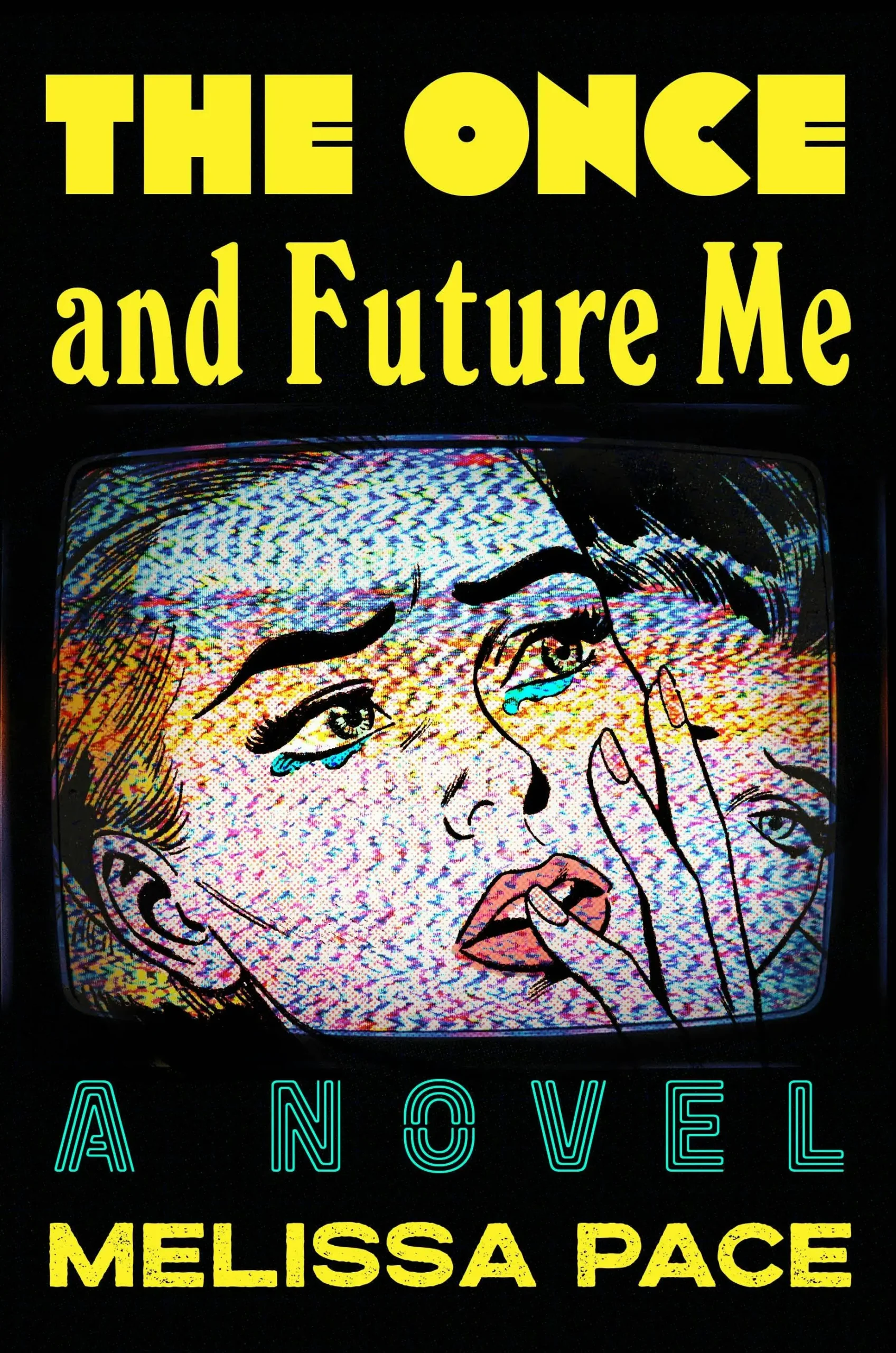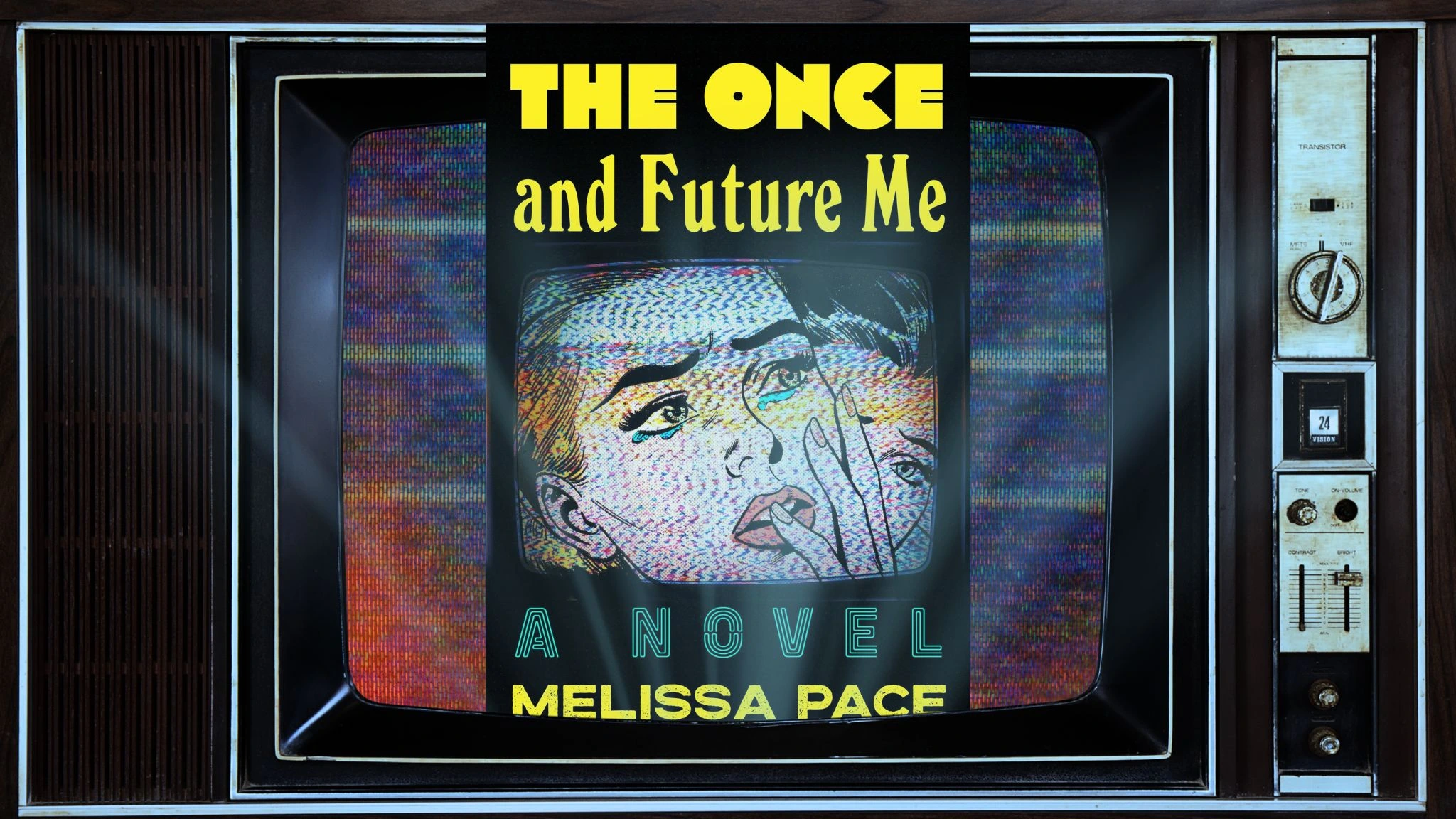The Once and Future Me by Melissa Pace
“Death is louder than I thought it would be. I could have predicted the blinding white light … But the roar. No one mentioned the roar.”
When the narrator of Melissa Pace’s The Once and Future Me opens her eyes after what she assumes is her death, she finds she is on a bus with bars on the windows and half a dozen other women, and when the bus grinds to a halt, it is in front of a building with a sign: HANOVER STATE PSYCHIATRIC HOSPITAL. She doesn’t know why she is there — she doesn’t even know her name.
Dorothy Frasier, she is told. It is 1954, and she is a paranoid schizophrenic. Everyone says that: the doctors, the man named Paul who says he is her husband. But is he? Why does she keep getting these visions of a future Dorothy, but one named Bix? Why does she seem adept at picking locks and using whatever’s to hand as a weapon? Why do the people in her visions keep telling her she is the only one who can stop the Guest? What the hell is the Guest?
The answers come in a rollercoaster, genre-bending thriller that will keep you guessing, as Dorothy (Bix?) wrestles to separate fact from nightmarish delusion. Is she as crazy as they say — or is the craziness everything around her? “Sometimes,” another inmate says to her, “you need to trust that lunatic voice, ‘cause she’s the only one in your corner.”
Secrets pile up on secrets, and peril upon peril. In the end, she realizes, the only one she can count on for salvation is herself. But what is she trying to save? Her life? Her sanity? Or the world?
Melissa Pace is a former editor and writer for Elle and a past finalist for a prestigious fellowship for emerging screenwriters.
“The Once and Future Me actually started its life as a TV pilot. When it didn’t sell, I buried it deep in my graveyard drawer of unsold pilots, but could never quite forget about it. Years later, Bix’s story still had a grip on me, so as a reward for closing two thorny home sales (I was a realtor at the time), I decided to see if I could expand its scope and turn it into a novel.
“So many thoughts, feelings and inklings factored into why I chose this story to tell, but I’d say the most important of these was my own faulty memory. Ever since childhood, I’ve had a truly mediocre ability to recall events in my life, even some of the important ones that, for better or wors,e have shaped me, made me who I am. My undependable memory forces me to rely on friends and family to fill in the forgotten facts and details. That kind of dependence on others is frustrating, at times embarrassing, and makes me feel vulnerable (what if they’re lying?—this has happened ).
“So the question of who a person might become without any of their formative memories tethering them to their previous self (and keeping them safe from liars!) was really intriguing to me. When you think about it, none of us is simply one person. As we go through life’s blessings and disasters and evolve, all of us cycle through different versions of ourselves. For me it was recluse nature child; followed by nerdy teenager; besotted college student; inexplicably, Elle magazine fashion editor; newly orphaned and numb twenty-five-year-old, overwhelmed mother of three; then onto driven (tunnel-visioned) middle-aged wannabe writer; and now, slightly worse for wear, but elated, debut author. There is no one definition of me. Like many women asked to be many things, my identity is a moving target.
“Images of TOAFM’s opening scene were the first to come to me: a woman waking with no memory on a patient transport bus arriving at a state mental hospital. Her doctors, nurses, medical records, even her own combative behavior, are all telling her she’s a violent schizophrenic prone to delusions of grandeur, but she refuses to believe it — until the hallucinations begin, wild visions of a future where people tell her she’s a soldier sent back in time on a vital mission to save mankind. Now this damaged, headstrong woman isn’t sure what to believe; she’s in desperate straits — and being the sadistic creator I am, I wondered: how can I make those straits even more desperate? That’s when I decided to set the story in the 1950s with its smothering social conformity, constrictive gender roles, patriarchal power structure and overcrowded mental hospitals (at its peak in 1955, the population of patients housed in U.S. mental health facilities numbered over 600,000!).
“I loved the idea of this woman with possibly a vital job to do being made to play small, her thoughts and desires irrelevant to the hospital staff surrounding her. It felt relatable, that she could be any one of us under the same dire — if wildly fictional — circumstances, struggling to find our footing in a hostile world that’s labeled us as ‘less than.’ So many questions about the woman began to flood my brain. Why was she on that bus? Does her family know where she is? Are they the ones who sent her there? How will she learn the truth, and will she do it in time? Over the next few months, as I read every book on writing a novel I could get my hands on, I fleshed out the backstory and worlds for both possibilities: mental patient and time-traveler. Ultimately, my goal became to make each plausible for as long as possible, in the process interweaving the personal stakes of a psychological thriller (will the heroine learn if she’s unhinged or not in time?) with the humanity-sized stakes of a speculative thriller.”
Given the complications of the story — two different worlds and timelines, two different consciousnesses bleeding into one another, with key facts and revelations in each to be doled out — how hard was that to manage?
“Really, really hard!!!! So for sanity as well as suspense’s sake, I chose to tell Bix’s story in first person present. We see only what she sees when she sees it. So with the exception of a couple of memory flashes, the narrative runs on one continuous timeline, driven by Bix’s actions, whose consequences play out chronologically in both times. Have I totally confused you yet??
“This still left me dealing with possibly real, possibly imagined time travel, memory loss, multiple versions of a protagonist who becomes an increasingly unreliable narrator the deeper into treatment she goes. The who-knows-what-and-when quickly became more than my dodgy brain could keep straight on its own. Luckily, I came upon a workaround suggested by the late Nanowrimo website: a book journal. Which, thank God! Literally it holds everything, every idea that occurs to me while working on a project: from changes to story structure, chapter breaks, characters, themes, editing to-do lists, to inspiring passages of other writers, words I’m currently in love with and want to find a way to squeeze into the book, to minutiae like a list to keep track of what condescending 50s endearment each character uses to address Bix, along with oddball news items and facts, even my grocery lists — basically everything I need to not forget. It’s my second brain. And since I type it all into a Word file, it’s searchable. So when I come up with a brilliant new fix for the second act break, I can quickly search keywords and in moments learn I’ve already tried said brilliant fix, which did not work for x, y and z reasons. My book journal for TOAFM is way over a million words at this point!”
Also part of that journal, no doubt: the research necessary to get all the period detail right:
“So many delightful trips down the rabbit hole! Books, websites, photo caches, subreddits and newspapers on microfiche on all manner of 50s things, everything from Southern slang at the time to the McCarthy hearings, to segregation in northern Virginia, to how a garter belt worked.
“Even though the fictional Hanover State Psychiatric Hospital is an almost gothic presence in the novel, it was very important to me in creating it that I understood not just the harsh reality of aging, overcrowded mental hospitals in the 50s for the patients, but also the mindset, beliefs and concerns of the psychiatrists and administrators running them. I researched the most notorious mental hospitals at the time, places that, in the days before the drug Thorazine was introduced (and promptly abused to control patient behavior), relied on electroshock and even more brutal ‘therapies’ to subdue difficult patients. For instance, Milledgeville State Hospital in Georgia, at one time the largest asylum in the United States, used what was known as the Georgia Power Cocktail to punish uncooperative patients. Memoirs and other accounts by ex-patients were particularly helpful, as were excerpts from contemporary textbooks, including the first edition of the Diagnostic and Statistical Manual of Mental Disorders (DSM-I), published by the American Psychiatric Association (APA) in 1952, which, among its erroneous conclusions, lists homosexuality as a pathological behavior.
“The most surprising thing I discovered in my 1950s research was the work of Dr. Ewen Cameron. Cameron, a top psychiatrist at the time (he was head of the American Psychiatric Association the year they published that first edition of the DSM), he experimented on vast numbers of unsuspecting, mostly female patients in an effort to prove his depatterning theory: that by using extreme amounts of drugs and electroshock (three grand mal convulsions were to be electrically induced each day, seven days a week!) one could regress a patient to a childlike state where their mind was a clean, blank slate receptive to being ‘repatterned’ by the doctor and made well. It turned out these unethical medical experiments performed between 1957 to 1964 were funded by the CIA (cloaked within their top secret MK Ultra program) as part of their efforts to develop psychological and medical torture techniques. I based Dr. Sherman and his barbaric treatment protocol in the Unit on Cameron.”
But, finally, it all came down to the writing, and Pace ends her interview with two crucial pieces of advice:
“That old cliche ‘writing is rewriting’ is a cliche for a reason. It’s absolutely true. Getting out a shitty first draft as quickly as possible — and not going back over things before that’s done is soooo important. Quality writing always means multiple revisions — but you can’t revise a manuscript before you’ve gotten some version of it down on the page. So much time I wasted trying to perfect those first 50 pages before I even knew where the book was going! Not a good strategy. Almost all of the phrases, themes, moments I’m most proud of in the story came after many, many rewrites. What comes last for me is getting the rhythm of the words right. In those rare moments when I’m truly on my game I can almost feel the words moving through me like music. It’s wonderful.
“And just a final exhortation to any writers working on their first novel: Don’t go it alone like I did! Find others trying to tackle a novel — either through local writers’ groups or online. Make those author friends and lean on each other when the going gets rough. It wasn’t till after my novel had sold and I joined the 2025 debut author group on Discord that I discovered the joys of belonging to such a rich and supportive community!”
And readers will discover the joys of a superlative new imagination.
About Melissa Pace:
 A graduate of Wesleyan University, Melissa Pace is a former editor and writer for Elle magazine, as well as a past finalist in the Humanitas New Voices Fellowship for emerging television and screenwriters. The mother of three amazing children, Pace lives with her husband in Los Angeles, and when not writing she likes to lace up her cleats and get all her ya-ya’s out on its soccer fields. The Once and Future Me is her first novel. Connect with her on Instagram @melissadugganpace
A graduate of Wesleyan University, Melissa Pace is a former editor and writer for Elle magazine, as well as a past finalist in the Humanitas New Voices Fellowship for emerging television and screenwriters. The mother of three amazing children, Pace lives with her husband in Los Angeles, and when not writing she likes to lace up her cleats and get all her ya-ya’s out on its soccer fields. The Once and Future Me is her first novel. Connect with her on Instagram @melissadugganpace




